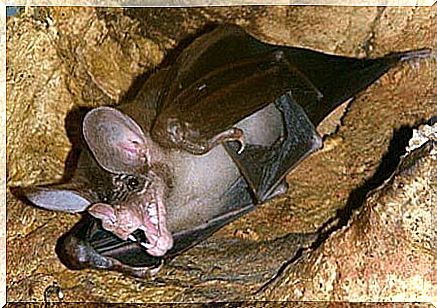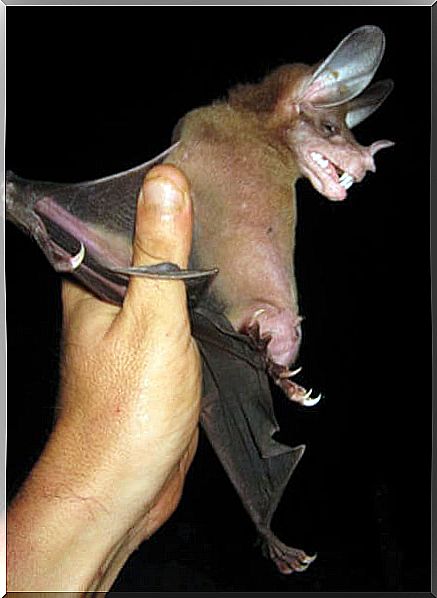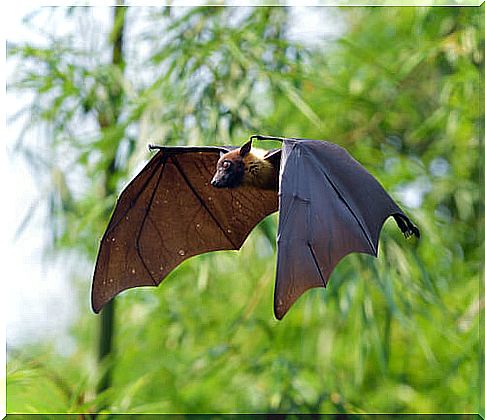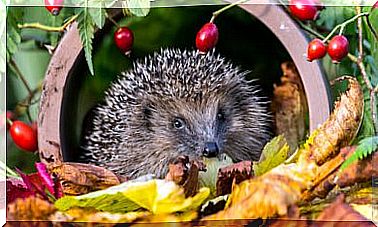The Giant Fake Vampire

The giant false vampire is one of the most curious species of giant bats recognized today. This typical species from America draws attention not only for its size, but also for its peculiar appearance. Here are the main characteristics of the fake giant vampire.
Physical characteristics and taxonomy of the fake giant vampire
The giant false vampire ( Vampyrum spectrum ) is a mammal of the phylostomid family. This is the only species in the genus Vampyrum , also known as the spectral bat or the spectral vampire bat.
Despite its popular names, the giant fake vampire is not related to the so-called ‘Old World fake vampires’, which are carnivorous bats of the Megadermatidae family .
It is the largest species of bat native to the American continent, and also the largest carnivorous bat. When they reach adulthood, they show an average wingspan of 80 centimeters. The length of its body varies between 12.5 and 15.3 centimeters, with a weight of 145 to 190 grams.
One of the most characteristic features of this bat is its pronounced nose and a very peculiar shape. Its snout is long and narrow, with strong teeth that protrude from its mouth; the ears are relatively small and rounded.
On the upper part of its body, a dark or medium brown color predominates, which may be slightly orange. The underside is usually paler in shades, which can range from gray-brown to yellow-brown.

The lower portion of its body is noticeably shorter and thinner than the rear. No visible tail is identified, although the tail membrane is long and broad. Powerful, long and curved claws are also seen on the front and rear legs.
Habitat and feeding of the giant false vampire
As we have mentioned, this is a species native to the New World, specifically its tropics. Its population expands from southern Mexico to Brazil, including all of Central America, Bolivia, Colombia, Ecuador, Suriname, Peru, Venezuela and Trinidad Island.
This vampire is a carnivorous species that feeds on a wide variety of vertebrate animals. Their diet includes the consumption of insects, amphibians, small birds and reptiles, and small mammals. They can even hunt other bats.
As their name suggests, these bats do not suck blood like vampires do in traditional fiction. They simply hunt and consume prey, just as all carnivorous animals do.
If we focus on hunting, we must emphasize that false giant bats are excellent nocturnal hunters. Their hunting technique resembles that of owls and owls, so they are extremely cautious when catching their prey.
These bats typically pounce from high branches or fly to patrol their surroundings in search of food. Upon identifying prey, they are ‘dropped’ to make a quick and effective attack. In this way, it is difficult for their prey to identify their presence in time to escape or defend themselves.

Habits and reproduction
The giant fake vampire is a kind of nocturnal habit like all bats. At night, they exercise their sophisticated hunting technique, and they are very active and cautious. During the day, they remain hidden in their ‘lairs’, located in the trees.
It is a sociable species that can live in small groups and is usually monogamous, although males may eventually mate with more than one female.
In general, the male is very present in the rearing of the young, and remains with the mother even during pregnancy. In fact, it is common for the female and the young to sleep wrapped in the wings of the male, to protect themselves from eventual attacks by predators.
Conservation status of the fake giant vampire
The spectral bat or giant false vampire is currently classified as an endangered species in Mexico. Unfortunately, there is not enough information on the status of its population in each country in Central and South America.
However, considering the progress of human beings on their natural habitat, it is estimated that their population has registered significant reductions in all countries. With the so-called false giant vampire we add one more species to the list of animals that are in danger of becoming extinct.
It might interest you …
Main image source | http://rodriguezgalarza.com/










